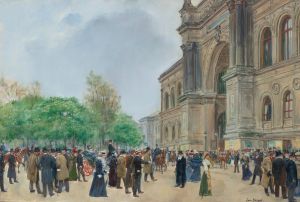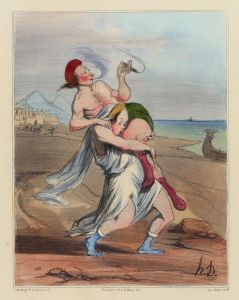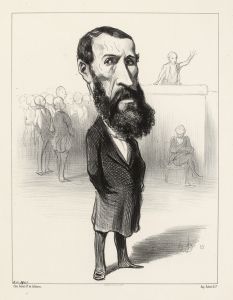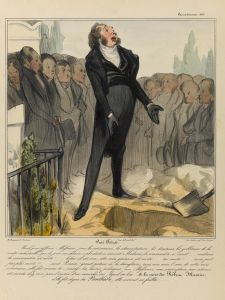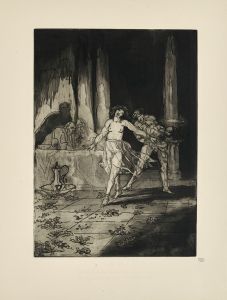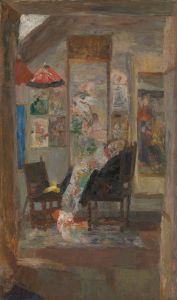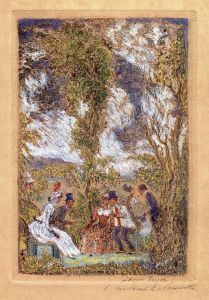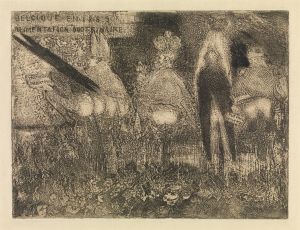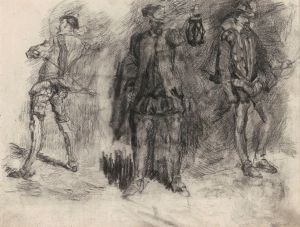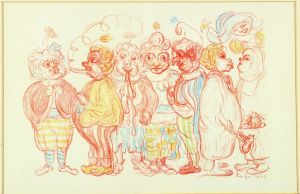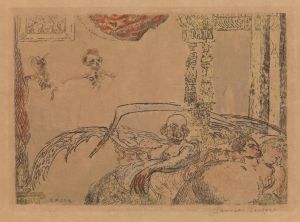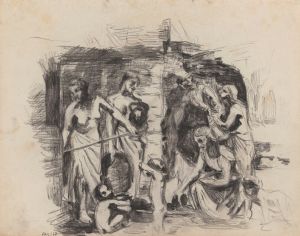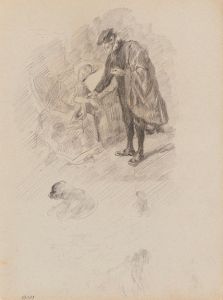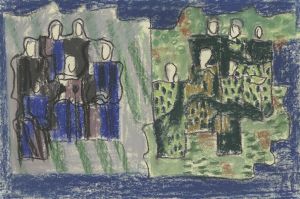
De ontucht
A hand-painted replica of James Ensor’s masterpiece De ontucht, meticulously crafted by professional artists to capture the true essence of the original. Each piece is created with museum-quality canvas and rare mineral pigments, carefully painted by experienced artists with delicate brushstrokes and rich, layered colors to perfectly recreate the texture of the original artwork. Unlike machine-printed reproductions, this hand-painted version brings the painting to life, infused with the artist’s emotions and skill in every stroke. Whether for personal collection or home decoration, it instantly elevates the artistic atmosphere of any space.
James Ensor was a Belgian painter and printmaker, known for his innovative and often provocative works that challenged the artistic norms of his time. One of his lesser-known works is "De ontucht," which translates to "The Debauchery" in English. Ensor's art is characterized by its vivid use of color, grotesque imagery, and satirical undertones, often reflecting his critical view of society and human nature.
"De ontucht" is a painting that exemplifies Ensor's unique style and thematic concerns. Although specific details about this painting are scarce, it is consistent with Ensor's broader body of work, which frequently explores themes of morality, vice, and the absurdity of human behavior. Ensor's fascination with masks, skeletons, and carnival imagery often served as metaphors for the hidden facets of human identity and the superficiality of societal norms.
Ensor was born in 1860 in Ostend, Belgium, and spent most of his life there. His upbringing in a seaside town, combined with his exposure to his family's curiosity shop filled with exotic and peculiar items, greatly influenced his artistic vision. Ensor's work is often associated with the Symbolist movement, although he also played a significant role in the development of Expressionism.
Throughout his career, Ensor faced criticism and rejection from the traditional art establishment due to his unconventional style and subject matter. However, he remained committed to his artistic vision, often using his work to critique the hypocrisy and moral decay he perceived in society. His paintings frequently depict chaotic scenes filled with fantastical elements, blending reality with imagination in a way that challenges viewers to question their perceptions.
Ensor's use of color is particularly noteworthy, as he employed bold and often clashing hues to create a sense of unease and tension in his compositions. This technique is evident in many of his works, where vibrant colors are juxtaposed with dark, ominous undertones, reflecting the duality of human nature and the complexity of the human experience.
While "De ontucht" may not be as widely recognized as some of Ensor's other masterpieces, such as "The Entry of Christ into Brussels in 1889" or "The Skeletons Fighting Over a Pickled Herring," it remains an important part of his oeuvre. It exemplifies his ability to blend satire with social commentary, using art as a means to provoke thought and challenge the status quo.
Ensor's influence on modern art is significant, as his work paved the way for future generations of artists to explore new forms of expression and push the boundaries of traditional artistic conventions. Today, his paintings are celebrated for their originality, emotional depth, and the unique perspective they offer on the human condition.
In summary, "De ontucht" by James Ensor is a testament to the artist's innovative approach to painting and his enduring legacy in the art world. Through his distinctive style and thought-provoking themes, Ensor continues to captivate audiences and inspire artists around the globe.





